Avatars
on the World Wide Web:
Marketing the "Descent"
Victoria Vesna
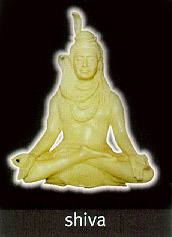 1995
was the year the Internet was opened to commercial use. After a reorganizationof
funding, the National Science Foundation (NSF) officially began planning
Internet2 - a collaborative efoort joining over 100 U.S. universities
- aimed at creating a network whose primary goal would be to facilitate research
and education missions of universities in the US. It is envisioned that this
network will be 100 to 1,000 times faster than the existing Internet. Applications
like tele-immersion and digital libraries will change the way people use computers
to learn, communicate and collaborate.[1]
Although the universities are taking lead in the initial development and research
of this network, this is a collaborative effort between federal government agencies,
private corporations and non-profit organizations. This means that it will probably
tae original Internet--first accessible and tested in research institutions,
then made publically available. Corporations such as IBM that have already
invested in this venture are most probably having long term plans for the commercial
potential of such a super fast network.
1995
was the year the Internet was opened to commercial use. After a reorganizationof
funding, the National Science Foundation (NSF) officially began planning
Internet2 - a collaborative efoort joining over 100 U.S. universities
- aimed at creating a network whose primary goal would be to facilitate research
and education missions of universities in the US. It is envisioned that this
network will be 100 to 1,000 times faster than the existing Internet. Applications
like tele-immersion and digital libraries will change the way people use computers
to learn, communicate and collaborate.[1]
Although the universities are taking lead in the initial development and research
of this network, this is a collaborative effort between federal government agencies,
private corporations and non-profit organizations. This means that it will probably
tae original Internet--first accessible and tested in research institutions,
then made publically available. Corporations such as IBM that have already
invested in this venture are most probably having long term plans for the commercial
potential of such a super fast network.
Opening
the Internet to the public had meant opening Pandora's box, and there was no
way anyone could even attempt to put a lid on the activities that were increasingly
taking place. Conceptualized as having only machines "talking" to
each other, its developers would have never guessed that this network of machines
would transform itself into a network of humans using the machines. Exponential
growth in the number of Internet users, the number of hosts connected to the
World Wide Web, and the number of companies establishing a Web presence has
created a gold rush mentality among firms and investors. This euphoria is largely
fueled by electronic commerce, and many companies are putting significant resources
towards figuring out the most effective ways of buying and selling everything
from groceries to clothing to movies over the Internet.
What
is particularly interesting about the commercialization of the net, however,
is that it is largely being driven by yesterday's anti-establishment hippies
and nerds, who have become overnight millionaires in the software industry.
Many of these new powerful personalities (with the exception of the most powerful
one) are bringing value systems influenced by eastern philosophies into the
market while collaborating with established corporate structures. Perhaps caught
between a dream and the mass market, it is interesting to look at how these
seemingly opposite worlds are taking form. This strange interplay, perhaps contradiction,
is best analyzed through our online selves in multi-user environments, also
known as "avatars"; a word that has now assumed a much narrower meaning
than its original theological source.
 Defining
the "Avatar"
Defining
the "Avatar"
Before
delving into analyses of how projecmanifest on the Internet and what kind of
implications they may have on the future on our perception of the marketplace,
it may be useful to give an overview of the myriad definitions of the "avatar".
According
to the Dictionary of Hinduism (1977), "Avatara" means"descent",
especially of a god from heaven to earth. In the Puranas, an avatara
is an incarnation, and is distinguished from a divine emanation (vyuha), both
of which are associated with Visnu and Siva, but particularly the former. The
avatara concept is probably a development of the ancient myth that, by the creative
power of his Maya, a god can assume any format will, as did Indra. The avatara
concept in Hinduism is a very complex hierarchical system with many different
forms taking place.
Longman's
Dictionary (1985) also defines avatar as the incarnation of Vishnu, a Hindu
deity, and an embodiment of a concept or philosophy. The Oxford Dictionary,
on the other hand, tells us that avatar can mean descent of a deity to earth
in an incarnate form (i.e., as in "the fifth avatar appeared as a dwarf");
a manifestation or presentation to the world (i.e., the avatar of mathematics);
a display, a phase (1990). If you refer to the Webster's Dictionary,
it says that an avatar is a manifestation or embodiment of a person, concept
or philosophy; a variant phase or version of a continuing basic entity (1989).
And finally, the Random House Dictionary describes an avatar as: "An
embodiment or concrete manifestation as of a principle attitude, way of life,
or the like" (1995).
In
contemporary India, distinguished personalities may be called avatars, which
is a sign that even at the source, the original theological meaning has shifted
in popular culture. For instance, on the Web page of India Group, Partner Anil
Srivastava refers to himself as "Anil Srivastava, avatar of global
markets and emerging technologies, contemplates interactive media, networking,
and online services from the omphalos of the Silicon Valley.[2]
 If
you ask anyone familiar with multi-user environments, the word simply means
an assumed identity in cyberspace. But, the source of the use of the word in
industry is a bit more difficult to identify. According to Peter Rothman,
founder of Avatar Software and Avatar Partners (and later DIVE
labs), "anyone claiming to know who used the word first, would be inventing
the facts."[3] Rothman and his
partner found the word in the dictionary in 1982, simply liking Webster's definition:
embodiment of a concept or a philosophy in a person. Appropriately, the debate
about this came up on the WELL discussion forum about the origin of the
word, in which Neal Stephenson claimed that he was first to use the term
in Snow Crash, but since the novel was not published until 1992, this
was not acknowledged. Generally, it is conceded that Randy Farmer and
Chip Morningstar's "Habitat" was the first to use this
term. They were inspired by the Hindu root of the word (Randall, 1995).
If
you ask anyone familiar with multi-user environments, the word simply means
an assumed identity in cyberspace. But, the source of the use of the word in
industry is a bit more difficult to identify. According to Peter Rothman,
founder of Avatar Software and Avatar Partners (and later DIVE
labs), "anyone claiming to know who used the word first, would be inventing
the facts."[3] Rothman and his
partner found the word in the dictionary in 1982, simply liking Webster's definition:
embodiment of a concept or a philosophy in a person. Appropriately, the debate
about this came up on the WELL discussion forum about the origin of the
word, in which Neal Stephenson claimed that he was first to use the term
in Snow Crash, but since the novel was not published until 1992, this
was not acknowledged. Generally, it is conceded that Randy Farmer and
Chip Morningstar's "Habitat" was the first to use this
term. They were inspired by the Hindu root of the word (Randall, 1995).
The
avatar name is apparently very popular these days. Numerous companies have registered
various versions of the name, usually by adding a word next to it. Some recent
examples are: Avatar Partners -- developing software for trading on the
net; Avatar Holdings -- a real estate developer of major resort, residential
and recreational communities; and Avatar Systems -- a moving company
specializing in corporate relocations, just to name a few. The commercial world
apparently has proprietary feelings towards the term. For example, at one point
Avatar Partners were being threatened with a lawsuit by the Avatar Financial
Associates who claimed to have been the first to have the name registered
and trademarked. And then there is the Avatar nine-day course on "contributing
to the creation of an enlightened planetary civilization." An enthusiastic
testimonial on the net by a devotee claims: "I enrolled in the Avatar course
in an attempt to alter behavior patterns that were interfering with the proper
conduct of my business. Avatar taught me how to easily ith the beliefs that
were causing my problems. . . . In addition, I found the Avatar experience to
be delightful and amazing. My life is fuller, more meaningful and pleasant since
I became an Avatar."[4]
 Descent
of the Avatar
Descent
of the Avatar
The
idea of the avatar "coming down" from an unspecified source in one
of many possible manifestations connects well to the reverse hierarchy established
originally by the scientific community at the inception of what would become
the Internet: the client "uploads" to, and "downloads" from,
the server that resides above.
The
software industry's debate on avatars is really about object interactions passing
between a variety of servers in real-time. Talking about avatars personalizes
the discussion and brings up issues having to do with the nature of identity,
security, interpersonal relations, and societies of the Internet.
The
concept of an avatar can also be easily transferred to the many variants of
computer messages and presentations being transferred from the Web to "client"
computer screens. And, finally, all these concepts and hierarchies fit perfectly
with financial markets used to trading numbers. The idea of products or services
constructing themselves on a computer screen as a result of information "coming
down" from the Internet and the World Wide Web is a very attractive prospect
for entrepreneurs. There is a sense of power and control the owner of a server
has, once removed from the flesh market.
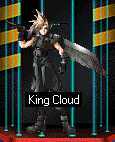 What
is particularly fascinating is how many are reading the mystical concepts of
the word avatar into various software applications. For instance, Peter Small
writes in the introduction of his online version of a book entitled Magical
Web Avatars:
What
is particularly fascinating is how many are reading the mystical concepts of
the word avatar into various software applications. For instance, Peter Small
writes in the introduction of his online version of a book entitled Magical
Web Avatars:
The mystical aspect implies
that the deity "Vishnu" has no specific form or shape before manifesting
as an avatar on earth. It is implicit that any physical appearance of an avatar
is merely a temporary form or phase from an infinite variety of possibilities--a
transient form from an indefinite, indefinable number of sources. It is the
capturing of this concept, which makes the word avatar ideal for the purpose
of describing the Web communication products which will be described in this
book" (Small, 1997).
Thus
product promotion is inextricably linked to mysticism and New Age values. This
is true for many softwares with mystically encoded connotations, and for the
marketing "gurus."
 New
Ageism typically encompasses an eclectic mix of different religious elements,
claiming no allegiance to nationality or even specific Gods. Still, the strong
ideological character remains, linked very much to cultural processes and marketing
of products and ideas, and seems to be pervasive in the structuring of a significant
number of new high tech corporations. Certainly, the very choice of naming an
identity in networked spaces an"avatar" indicates this trend. The
avatar in cyberspace represents a strange interplay of left-wing utopianism
with right wing entrepreneurism, mixed up with esoteric spiritualism. New Age
religion operates in tandem with networking technologies and "organic"
corporate structures--the new "cool" companies that are emerging all
over the high tech industry map.
New
Ageism typically encompasses an eclectic mix of different religious elements,
claiming no allegiance to nationality or even specific Gods. Still, the strong
ideological character remains, linked very much to cultural processes and marketing
of products and ideas, and seems to be pervasive in the structuring of a significant
number of new high tech corporations. Certainly, the very choice of naming an
identity in networked spaces an"avatar" indicates this trend. The
avatar in cyberspace represents a strange interplay of left-wing utopianism
with right wing entrepreneurism, mixed up with esoteric spiritualism. New Age
religion operates in tandem with networking technologies and "organic"
corporate structures--the new "cool" companies that are emerging all
over the high tech industry map.
James
Hillman, a psychologist widely read by the corporate sector's elite, writes
in his influential best-seller, Kinds of Power: "Economics is the
only effective syncretistic cult remaining in the world today, our world's only
ecumenical faith. It provides the daily ritual, uniting Christian, Hindu, Mormon,
atheist, Buddhist, Sikh, Adventist, animist, evangelist, Muslim, Jew, fundamentalist
and New Ager in one common temple, admitting all alike . . ." (1995).
How
perfectthe Internet, then, to unite the multi-national corporations with their
customers regardless of nation, race or creed. The multi-user environment with
its dynamic design for instant communication and relations is the ideal space
for the creation of communities with their various interests and markets, commercial
or otherwise. Hence the World Wide Web, with its friendly graphical user interface--not
like its predecessors, the text-based virtual realities, only accessible by
the unix literati.
To
date, text based environments are still active with hundreds of thousands of
users, and provide useful research data for those planning commercial ventures
with graphical multi-user communities on the Web. Naturally, the graphical offspring
promise numbers projected into the hundreds of millions (Advertising Age, 1996).
There are over 500 MOOs (Turkle, 1995) in existence, with hundreds of thousands
of users who might easily make a transition from the text based environments
to more graphically designed spaces.
 Hierarchies
of Multi-user Environments
Hierarchies
of Multi-user Environments
Examining
the hierarchy of MUDs and MOOs is helpful if we are to begin understanding the
evolving social structure of avatars in cyberspace.[5]
It is generally acknowledged that the Arch-Wizards are those who "own"
the MOO, and that those new to the environment are usually guests who progress
in their status as they become more active and experienced.
Most
MUDs and MOOs prefer to allow users to retain anonymity so as not to destroy
the online atmosphere by introduction of offline life. An exception to this
would be MIT's MediaMOO, where each character has a "character
name" and a "real_name."[6] Real names don't normally appear,
but can be seen with the @whois command. Only janitors (administrators of the
MOO) can set or change real names. Because the goal is to enhance community
amongst media researchers, you must provide a statement of your research interests
in order to be granted a character. Regardless of the specialized purpose of
the MOO, whether it is the most down-and-dirty fantasy dungeon and dragon MOO
or a MOO steeped in theory, people in charge of the code reside at the "top."
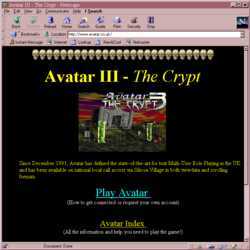 For
instance, Avatar III - The Crypt, is owned and run by a company in the
UK that specializes in games.[7] The Crypt is a beta site that presumably
will become commercial as soon as enough players visit it regularly. When you
first enter the site, you will get promotional materials--not at all enshrouded
in fantasy--about the company that produces the MOO. The avatar inhabitants
are--Shopkeepers, Moneychangers, Pawnbrokers, Pedlars, Town Guardsmen, Market
Traders and Citadel Traders. The Avatar classes are very different, and quests
are allocated to suit the skills of the different classes. The site's narrative
and hierarchy uncannily resembles the class system England is so familiar with.
For
instance, Avatar III - The Crypt, is owned and run by a company in the
UK that specializes in games.[7] The Crypt is a beta site that presumably
will become commercial as soon as enough players visit it regularly. When you
first enter the site, you will get promotional materials--not at all enshrouded
in fantasy--about the company that produces the MOO. The avatar inhabitants
are--Shopkeepers, Moneychangers, Pawnbrokers, Pedlars, Town Guardsmen, Market
Traders and Citadel Traders. The Avatar classes are very different, and quests
are allocated to suit the skills of the different classes. The site's narrative
and hierarchy uncannily resembles the class system England is so familiar with.
Rose,
a user of the five year old MOO since day one, has gained the status of a god.
She logs on daily to help newbies, and in this way gains points. One needs 1,000
experience points to move to the second level, and 1,024,000 to get to the twelfth
and highest level. Gods have the power to move uplevels to ensure that the lower
level gods can't force higher level gods to do things.[8]
Users
are encouraged to help those on lower levels, which not only teaches human relations,
but ensures a growing community. Thus the ones at the "top" assume
a role similar to those held be religious figures of the past. By providing
incentives they function as primary agents of socialization, and become more
powerful in the process.[9]
 Particularly
interesting about Avatar III is that the role playing game is housed in a commercial
shopping site--Silicon Village. Thus, an entire community is formed around the
shopping site where users have the illusion of anonymity. The Arch-Avatars (owners),
on the other hand, can easily track all the personal information they may need
on users' likes and dislikes, newsgroup postings, favorite web sites, and navigational
habits. As soon as users enter a site, it bto learn where they go, what they
click on, their domain name, computer type, and general location. Personal information
is fast becoming a most precious commodity, and those who are positioned as
packagers and resellers of it will profit the most in the Information Age.
Particularly
interesting about Avatar III is that the role playing game is housed in a commercial
shopping site--Silicon Village. Thus, an entire community is formed around the
shopping site where users have the illusion of anonymity. The Arch-Avatars (owners),
on the other hand, can easily track all the personal information they may need
on users' likes and dislikes, newsgroup postings, favorite web sites, and navigational
habits. As soon as users enter a site, it bto learn where they go, what they
click on, their domain name, computer type, and general location. Personal information
is fast becoming a most precious commodity, and those who are positioned as
packagers and resellers of it will profit the most in the Information Age.
 Descent
of the Graphical Avatar
Descent
of the Graphical Avatar
In
is truly awe-inspiring to survey how much progress industry has made in figuring
out ways to cash in on the potential markets of the World Wide Web. Star-featured
chat rooms sponsored by large companies, soap operas, online trading, and role
playing games seem to be the places where most success is promised. In other
words, any space that could potentially form large communities that will regularly
log on to communicate, exchange ideas and spend cybercash.
Avatar-filled
chat rooms seem to be where most entrepreneurs are placing their bets. By the
year 2000, chats are expected to generate 7.9 billion hours of online use, with
a resulting $1 billion in advertising revenue (New York Times, 1996).
But makers of virtual environments predict that scrolling text for chat rooms
will soon be replaced with 2-D and 3-D graphical environments, while marketers
are busily exploring ways to exploit new technology for advertising.
 For
example, soap operas on the World Wide Web are seen as ideal environments for
marketing strategies involving advertisements built into the narratives.[10]
Moreover, in contrast with television, there are virtually no standards regulating
web-based advertising. Currently several cybersoaps allow advertisers the chance
to have their products integrated into the story line (Advertising Age,
1996).
For
example, soap operas on the World Wide Web are seen as ideal environments for
marketing strategies involving advertisements built into the narratives.[10]
Moreover, in contrast with television, there are virtually no standards regulating
web-based advertising. Currently several cybersoaps allow advertisers the chance
to have their products integrated into the story line (Advertising Age,
1996).
Meanwhile,
Rocket Science Games, a maker of interactive entertainment software,
and CyberCash, a company that handles payment transactions on the Internet,
are forming a partnership to develop a virtual video game arcade on the World
Wide Web. Scheduled for rollout later this year, Virtual Arcade will
feature interactive versions of classic video games. Users will reportedly be
able to modify the environments of the games, and they will pay as little as
25 cents to play each game. Payments will come out of an "electronic wallet"
that users could replenish by transferring money from their bank accounts (San
Francisco Chronicle, 1996).
Of
course none of these developments would be taking place with this kind of speed
if the WWW was a text-only environment. Although text-based MOOs and MUDs are
still very active communities, and there will probably always be a place for
them, the real gold-rush has started with the introduction of graphical user
interfaces. Graphical Multi-User Konversations ("GMUKs") are something
of a cross between a MOO and a chat room or channel. Rather than limiting users
to text-only communications, as in most virtual chat environments, GMUKs add
an audio-visual dimension that creates the illusion of movement and space.
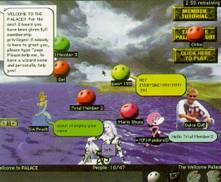 The
most popular GMUK, to date, is Time-Warner's The Palace, a client/server
program that creates a visual and spatial chat environment.[11]
Currently, there are many Palace sites located across the Internet, varying
widely in technical and artistic sophistication, as well as graphical themes.
Jim Bumgardner and Mark Jeffrey created and designed The Palace
at Time Warner's Palace Group. The software driving the environment was released
in November 1995. More than 300,000 client versions have been downloaded since
then, and over 1,000 commercial and private-hosted Palace communities have been
established. Major investors include Intel, Time Warner, Inc., and Softbank.
Companies like Capitol Records, Twentieth Century Fox, Fox Television, Sony
Pictures, MTV (Suller).
The
most popular GMUK, to date, is Time-Warner's The Palace, a client/server
program that creates a visual and spatial chat environment.[11]
Currently, there are many Palace sites located across the Internet, varying
widely in technical and artistic sophistication, as well as graphical themes.
Jim Bumgardner and Mark Jeffrey created and designed The Palace
at Time Warner's Palace Group. The software driving the environment was released
in November 1995. More than 300,000 client versions have been downloaded since
then, and over 1,000 commercial and private-hosted Palace communities have been
established. Major investors include Intel, Time Warner, Inc., and Softbank.
Companies like Capitol Records, Twentieth Century Fox, Fox Television, Sony
Pictures, MTV (Suller).
 Time/Warner's
"avs," as Palace members affectionately call them, fall into two overall
categories. The first are the standard set of "smileys" that come
with the Palace program.
Time/Warner's
"avs," as Palace members affectionately call them, fall into two overall
categories. The first are the standard set of "smileys" that come
with the Palace program. 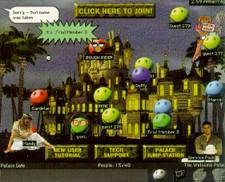 These
faces are available to all users, including unregistered "guests."
The standard avs are associated with newbies, the unregistered guests who are
considered a lower class of the Palace population. They have not paid the registration
fee, they do not belong to the Palace culture, and are limited to wearing only
the standard avs and props. They cannot create their own avatars, and are reduced
to wearing a smiley which identifies them as a newbie. Only after paying the
registration fee can the user unlock the prop-creating/editing feature of the
Palace software. At that point they are able to choose from Animal, Cartoon,
Celebrity, Evil, Real, Idiosyncratic, Positional, Power, Seductive or "Other"
avatars. The Palace is an excellent example of an environment in cyberspace
that is a combination of an established entertainment industry's approach to
pre-packaged programming for the public, reminiscent of developments such as
Disneyland or any planned community.
These
faces are available to all users, including unregistered "guests."
The standard avs are associated with newbies, the unregistered guests who are
considered a lower class of the Palace population. They have not paid the registration
fee, they do not belong to the Palace culture, and are limited to wearing only
the standard avs and props. They cannot create their own avatars, and are reduced
to wearing a smiley which identifies them as a newbie. Only after paying the
registration fee can the user unlock the prop-creating/editing feature of the
Palace software. At that point they are able to choose from Animal, Cartoon,
Celebrity, Evil, Real, Idiosyncratic, Positional, Power, Seductive or "Other"
avatars. The Palace is an excellent example of an environment in cyberspace
that is a combination of an established entertainment industry's approach to
pre-packaged programming for the public, reminiscent of developments such as
Disneyland or any planned community.
 Earth
to Avatar
Earth
to Avatar
The
biggest problem faced by industry in developing multi-user environments for
avatars is the fact that people can assume many identities and are still quite
difficult to track down. This is largely due to the lack of a universal standard
allowing the avatars to move from one virtual world to another. There are a
number of avatars currently on the Web--VRML, 2D, text, Voxel-drawn ones, and
Virtual Humans (which refers to the group set up by VR News to exchange
information about the development of autonomous agents that look like human
beings).
Buying
patterns, monetary exchange, security, and authentication must be maintained
in the avatar in order for a market to be fully developed. Using standardized
avatars can help in using Internet search engines for avatars and avatar properties.
Finally, avatar companies have become common--they can price their avatars at
a lower cost, make them available to more people and guarantee broader applicability.
 In
October '96, at the Earth to Avatar Conference in San Francisco, architects
of 3D graphical interfaces on the web met to discuss the lack of avatar standards.
When former Apple Computer Chairman John Sculley gave his analysis
of the future of cyberspace at the conference, he said that once the technology
is shown to work and standards are agreed, the big league players will move
into cyberspace. As avatars become members of self-organizing groups, Sculley
sees them as "a driving force shaping the economics of this industry"
(Wilcox).
In
October '96, at the Earth to Avatar Conference in San Francisco, architects
of 3D graphical interfaces on the web met to discuss the lack of avatar standards.
When former Apple Computer Chairman John Sculley gave his analysis
of the future of cyberspace at the conference, he said that once the technology
is shown to work and standards are agreed, the big league players will move
into cyberspace. As avatars become members of self-organizing groups, Sculley
sees them as "a driving force shaping the economics of this industry"
(Wilcox).
Universal
Avatar Standards group stated that their core aim is to focus on the nature
of avatars with regard to such issues as gender representation, ID authentication,
personal expression versus social constraints, avatar versus world scale, and
the communication of emotion. Maclen Marvit, teleologist of Worlds
in San Francisco, provides this overview of UA's approach:
We are at a point in our
industry where lots of companies are doing innovative things, both technically
and artistically. The goal of UA is to allow users to move as freely as possible
between the technologies and find the best experiences in each, while maintaining
a consistent identity. So if Bernie moves from one "world" [developed
using] one technology to another "world" in another technology,
he can maintain his avatar's representation, his Internet phone number and
his proof of identity" (Wilcox).
The
proposal provides an architecture for managing thousands of geographically distant
users simultaneously, with interactive behaviors, voice, 3-D graphics and localized
audio. It uses a powerful concept known as "regions," which allows
for multiple contiguous worlds, accelerated 3-D graphics, and efficient server/client
communications. The avatar standards issue is crucial to the success of VRML
as a commercially viable language. Until there is some common definition of
an avatar, and universality of movement between spaces on the Internet, it seems
unlikely that any VRML company can hope to make serious money.
The
proposal discusses creation of a link to a user profile, coded in HTML and containing
data the user wishes to be known either about his fantasy identity or a true
one. Proofs of identity Vendor-specific extensions and user's history. A history
could be with reference to games, for example, wizard status in a Role Playing
Game (RPG), or it could hold marketing information about purchases made by credit
card.
 Conclusion
Conclusion
The
Internet as it exists today is one large market testing ground--a living laboratory
of sorts. It is clear that most companies are moving in the direction of developing
multi-user communities with standardized avatars. Because standardization renders
identity in fixed and accountable form, the connection between the users' physical
self and bank accounts will not be confused. What will be confused by design,
however, is the power status of the avatar--i.e., who is really the "user"
and who the "used." In a paradox of power relations, the corporations
practice their accustomed method of top-down hierarchy to lift lowly users into
the avatar's "god sphere." Be as gods, the hidden god thus decrees;
and it is technology and its invisible priests (those who control the servers)
who are the real avatar of the god sphere. When the Internet2 "descends,"
and when avatars are standardized and cybercash perfected, we will be looking
out upon a world that we can't even imagine, because it has been imagined for
us.
NOTES
Special thanks to Alan Liu
and Robert Nideffer for their suggestions during the revision of this essay.
1.
Internet2--also known as I2--is a collaborative effort joining over 100 U.S.
universities. See http://www.internet2.edu
(Back)
2.
Anil
Srivastava - - http://www.indonet.com/AnilSrivastava.html (Back)
3.
I interviewed Peter Rothman on December 31, 1996, at MetaTools INC. in Carpinteria.
His company, DIVE, was acquired by MetaTools, and he is currently the director
of Research & Development. (Back)
4.
William L. Owens, Wisconsin, USA http://www.epcnet.com/avatar/index.html
(Back)
5.
MOO, technically, means MUD-Object Oriented. And MUD is a Multiple-User Dungeon
(or Dimension. MUDs started as interactive adventure games similar to Dungeons
and Dragons for the computer--but a version that participants could play over
the Internet. Since those days, the use of MUDs have expanded to other sorts
of games and to more social uses. The object-orientation of MOOs puts more of
the programming focus on the "objects" that are in the MOO. Some of
the most significant research done to date on MUDs and MOOs has taken place
at Xerox Parc, University of Virginia and the MIT media lab. At Xerox Parc,
Curtis Pavel established LambdaMOO and wrote on the social phenomena of Text-Based
virtual realities (1992). (Back)
6.
MediaMOO, http://www.cc.gatech.edu/fac/Amy.Bruckman/MediaMOO/
To connect to MediaMOO from a UNIX host telenet: mediamoo.cc.gatech.edu 8888
- From a VMS host, type: telnet mediamoo.cc.gatech.edu /port=8888(Back)
7.
Avatar III - the Crypt - http://www.avatar.co.uk/
(Back)
8.
I interviewed Rose on May 29, 1997. In RL (real life), she works in a social
security office. (Back)
9.
An example of a code
of conduct in a online game, original from: http://games.world.co.uk/code_of_conduct.html
(Back)
10.
Online soaps include:
- The
Spot: (full site at http://www.thespot.com)
- Ferndale - No longer
in existence
- Techno 3 - No longer
in existence
- The East Village - No
longer in existence
(Back)
11.
The Palace Home Page -- http://www.thepalace.com
(Back)
REFERENCES
Dunn, A., "Think of
Your Soul as a Market Niche," New York Times Cybertimes September
11, 1996.
Cleland, K., "Chat
Gives Marketers Something to Talk About," Advertising Age August
5, 1996.
Curtis, P. (1992), "Mudding:
Social Phenomena in Text-based Virtual realities," unpublished, available
via anonymous FTP: ftp://parcftp.xerox.com/pub/MOO/papers/DIAC92.txt
Dillstone, F.W., (1951)
The Structure of the Divine Society, Lutterworth Press.
Donovan, L., "Secret
Identities (Secure Electronic Signatures Would Aid Internet Commerce),"
Financial Times 2/6/96.
Einstein, D., "Virtual
Arcade Games Play the classics on the Internet," San Francisco Chronicle
February 13, 1996 p. C3.
Hendrickson, R. (1987),
Encyclopedia of Word and Phrase Origins, New York: Facts on File.
Levere, J., "Advertising:
With Soap Operas on Web, What's Next?," The New York Times March
11, 1996.
Longman Dictionary,
(1985) Harlow [Essex] : Longman.
Oxford Dictionary,
(1990) New York : Oxford University Press.
Randall, F. et al. "From
Habitat to Global Cyberspace," unpublished, available via the World
Wide Web: http://www.communities.com/paper/hab2cybr.html
Random House Dictionary,
(1994) New York: Random House.
Riedman, P., "Avatars
Build Character on 3-D Chat Sites," Advertising Age September 1996.
Small, P., "Magical
Web Avatars: The Sorcery of Biotelemorphic Cells" http://192.41.36.58/avatars/Index.htm
Stutley, M. (1977) Dictionary
of Hinduism, London: Routledge & Kegan Paul.
Stephenson, N., (1992) Snow
Crash, New York: Bantam Books.
Suler, J. (Nov. 1996). "The
Psychology of Cyberspace." World Wide Web, http://www1.rider.edu/~suler/psycyber
Turkle, S, (1984) The
Second Self: Computers and the Human Spirit, New York: Simon & Schuster.
Turkle, S, (1995), Life
on the Screen, New York: Simon & Schuster.
Webster's New dictionary,
(1991) Cleveland : Webster's New World.
Wilcox, S. (1996), "Bringing
'Behaviors' to VRML: Making Sense of the Avatar debate," Netscape
World, January 1997 http://www.netscapeworld.com/netscapeworld/nw-01-1997/nw-01-avatar.html
1995
was the year the Internet was opened to commercial use. After a reorganizationof
funding, the National Science Foundation (NSF) officially began planning
Internet2 - a collaborative efoort joining over 100 U.S. universities
- aimed at creating a network whose primary goal would be to facilitate research
and education missions of universities in the US. It is envisioned that this
network will be 100 to 1,000 times faster than the existing Internet. Applications
like tele-immersion and digital libraries will change the way people use computers
to learn, communicate and collaborate.[1]
Although the universities are taking lead in the initial development and research
of this network, this is a collaborative effort between federal government agencies,
private corporations and non-profit organizations. This means that it will probably
tae original Internet--first accessible and tested in research institutions,
then made publically available. Corporations such as IBM that have already
invested in this venture are most probably having long term plans for the commercial
potential of such a super fast network.
![]() If
you ask anyone familiar with multi-user environments, the word simply means
an assumed identity in cyberspace. But, the source of the use of the word in
industry is a bit more difficult to identify. According to Peter Rothman,
founder of Avatar Software and Avatar Partners (and later DIVE
labs), "anyone claiming to know who used the word first, would be inventing
the facts."[3] Rothman and his
partner found the word in the dictionary in 1982, simply liking Webster's definition:
embodiment of a concept or a philosophy in a person. Appropriately, the debate
about this came up on the WELL discussion forum about the origin of the
word, in which Neal Stephenson claimed that he was first to use the term
in Snow Crash, but since the novel was not published until 1992, this
was not acknowledged. Generally, it is conceded that Randy Farmer and
Chip Morningstar's "Habitat" was the first to use this
term. They were inspired by the Hindu root of the word (Randall, 1995).
If
you ask anyone familiar with multi-user environments, the word simply means
an assumed identity in cyberspace. But, the source of the use of the word in
industry is a bit more difficult to identify. According to Peter Rothman,
founder of Avatar Software and Avatar Partners (and later DIVE
labs), "anyone claiming to know who used the word first, would be inventing
the facts."[3] Rothman and his
partner found the word in the dictionary in 1982, simply liking Webster's definition:
embodiment of a concept or a philosophy in a person. Appropriately, the debate
about this came up on the WELL discussion forum about the origin of the
word, in which Neal Stephenson claimed that he was first to use the term
in Snow Crash, but since the novel was not published until 1992, this
was not acknowledged. Generally, it is conceded that Randy Farmer and
Chip Morningstar's "Habitat" was the first to use this
term. They were inspired by the Hindu root of the word (Randall, 1995).![]() What
is particularly fascinating is how many are reading the mystical concepts of
the word avatar into various software applications. For instance, Peter Small
writes in the introduction of his online version of a book entitled Magical
Web Avatars:
What
is particularly fascinating is how many are reading the mystical concepts of
the word avatar into various software applications. For instance, Peter Small
writes in the introduction of his online version of a book entitled Magical
Web Avatars:![]() New
Ageism typically encompasses an eclectic mix of different religious elements,
claiming no allegiance to nationality or even specific Gods. Still, the strong
ideological character remains, linked very much to cultural processes and marketing
of products and ideas, and seems to be pervasive in the structuring of a significant
number of new high tech corporations. Certainly, the very choice of naming an
identity in networked spaces an"avatar" indicates this trend. The
avatar in cyberspace represents a strange interplay of left-wing utopianism
with right wing entrepreneurism, mixed up with esoteric spiritualism. New Age
religion operates in tandem with networking technologies and "organic"
corporate structures--the new "cool" companies that are emerging all
over the high tech industry map.
New
Ageism typically encompasses an eclectic mix of different religious elements,
claiming no allegiance to nationality or even specific Gods. Still, the strong
ideological character remains, linked very much to cultural processes and marketing
of products and ideas, and seems to be pervasive in the structuring of a significant
number of new high tech corporations. Certainly, the very choice of naming an
identity in networked spaces an"avatar" indicates this trend. The
avatar in cyberspace represents a strange interplay of left-wing utopianism
with right wing entrepreneurism, mixed up with esoteric spiritualism. New Age
religion operates in tandem with networking technologies and "organic"
corporate structures--the new "cool" companies that are emerging all
over the high tech industry map.![]() For
instance, Avatar III - The Crypt, is owned and run by a company in the
UK that specializes in games.[7] The Crypt is a beta site that presumably
will become commercial as soon as enough players visit it regularly. When you
first enter the site, you will get promotional materials--not at all enshrouded
in fantasy--about the company that produces the MOO. The avatar inhabitants
are--Shopkeepers, Moneychangers, Pawnbrokers, Pedlars, Town Guardsmen, Market
Traders and Citadel Traders. The Avatar classes are very different, and quests
are allocated to suit the skills of the different classes. The site's narrative
and hierarchy uncannily resembles the class system England is so familiar with.
For
instance, Avatar III - The Crypt, is owned and run by a company in the
UK that specializes in games.[7] The Crypt is a beta site that presumably
will become commercial as soon as enough players visit it regularly. When you
first enter the site, you will get promotional materials--not at all enshrouded
in fantasy--about the company that produces the MOO. The avatar inhabitants
are--Shopkeepers, Moneychangers, Pawnbrokers, Pedlars, Town Guardsmen, Market
Traders and Citadel Traders. The Avatar classes are very different, and quests
are allocated to suit the skills of the different classes. The site's narrative
and hierarchy uncannily resembles the class system England is so familiar with.![]() Particularly
interesting about Avatar III is that the role playing game is housed in a commercial
shopping site--Silicon Village. Thus, an entire community is formed around the
shopping site where users have the illusion of anonymity. The Arch-Avatars (owners),
on the other hand, can easily track all the personal information they may need
on users' likes and dislikes, newsgroup postings, favorite web sites, and navigational
habits. As soon as users enter a site, it bto learn where they go, what they
click on, their domain name, computer type, and general location. Personal information
is fast becoming a most precious commodity, and those who are positioned as
packagers and resellers of it will profit the most in the Information Age.
Particularly
interesting about Avatar III is that the role playing game is housed in a commercial
shopping site--Silicon Village. Thus, an entire community is formed around the
shopping site where users have the illusion of anonymity. The Arch-Avatars (owners),
on the other hand, can easily track all the personal information they may need
on users' likes and dislikes, newsgroup postings, favorite web sites, and navigational
habits. As soon as users enter a site, it bto learn where they go, what they
click on, their domain name, computer type, and general location. Personal information
is fast becoming a most precious commodity, and those who are positioned as
packagers and resellers of it will profit the most in the Information Age.![]() For
example, soap operas on the World Wide Web are seen as ideal environments for
marketing strategies involving advertisements built into the narratives.[10]
Moreover, in contrast with television, there are virtually no standards regulating
web-based advertising. Currently several cybersoaps allow advertisers the chance
to have their products integrated into the story line (Advertising Age,
1996).
For
example, soap operas on the World Wide Web are seen as ideal environments for
marketing strategies involving advertisements built into the narratives.[10]
Moreover, in contrast with television, there are virtually no standards regulating
web-based advertising. Currently several cybersoaps allow advertisers the chance
to have their products integrated into the story line (Advertising Age,
1996).![]() The
most popular GMUK, to date, is Time-Warner's The Palace, a client/server
program that creates a visual and spatial chat environment.[11]
Currently, there are many Palace sites located across the Internet, varying
widely in technical and artistic sophistication, as well as graphical themes.
Jim Bumgardner and Mark Jeffrey created and designed The Palace
at Time Warner's Palace Group. The software driving the environment was released
in November 1995. More than 300,000 client versions have been downloaded since
then, and over 1,000 commercial and private-hosted Palace communities have been
established. Major investors include Intel, Time Warner, Inc., and Softbank.
Companies like Capitol Records, Twentieth Century Fox, Fox Television, Sony
Pictures, MTV (Suller).
The
most popular GMUK, to date, is Time-Warner's The Palace, a client/server
program that creates a visual and spatial chat environment.[11]
Currently, there are many Palace sites located across the Internet, varying
widely in technical and artistic sophistication, as well as graphical themes.
Jim Bumgardner and Mark Jeffrey created and designed The Palace
at Time Warner's Palace Group. The software driving the environment was released
in November 1995. More than 300,000 client versions have been downloaded since
then, and over 1,000 commercial and private-hosted Palace communities have been
established. Major investors include Intel, Time Warner, Inc., and Softbank.
Companies like Capitol Records, Twentieth Century Fox, Fox Television, Sony
Pictures, MTV (Suller).![]()
![]() These
faces are available to all users, including unregistered "guests."
The standard avs are associated with newbies, the unregistered guests who are
considered a lower class of the Palace population. They have not paid the registration
fee, they do not belong to the Palace culture, and are limited to wearing only
the standard avs and props. They cannot create their own avatars, and are reduced
to wearing a smiley which identifies them as a newbie. Only after paying the
registration fee can the user unlock the prop-creating/editing feature of the
Palace software. At that point they are able to choose from Animal, Cartoon,
Celebrity, Evil, Real, Idiosyncratic, Positional, Power, Seductive or "Other"
avatars. The Palace is an excellent example of an environment in cyberspace
that is a combination of an established entertainment industry's approach to
pre-packaged programming for the public, reminiscent of developments such as
Disneyland or any planned community.
These
faces are available to all users, including unregistered "guests."
The standard avs are associated with newbies, the unregistered guests who are
considered a lower class of the Palace population. They have not paid the registration
fee, they do not belong to the Palace culture, and are limited to wearing only
the standard avs and props. They cannot create their own avatars, and are reduced
to wearing a smiley which identifies them as a newbie. Only after paying the
registration fee can the user unlock the prop-creating/editing feature of the
Palace software. At that point they are able to choose from Animal, Cartoon,
Celebrity, Evil, Real, Idiosyncratic, Positional, Power, Seductive or "Other"
avatars. The Palace is an excellent example of an environment in cyberspace
that is a combination of an established entertainment industry's approach to
pre-packaged programming for the public, reminiscent of developments such as
Disneyland or any planned community.![]() In
October '96, at the Earth to Avatar Conference in San Francisco, architects
of 3D graphical interfaces on the web met to discuss the lack of avatar standards.
When former Apple Computer Chairman John Sculley gave his analysis
of the future of cyberspace at the conference, he said that once the technology
is shown to work and standards are agreed, the big league players will move
into cyberspace. As avatars become members of self-organizing groups, Sculley
sees them as "a driving force shaping the economics of this industry"
(Wilcox).
In
October '96, at the Earth to Avatar Conference in San Francisco, architects
of 3D graphical interfaces on the web met to discuss the lack of avatar standards.
When former Apple Computer Chairman John Sculley gave his analysis
of the future of cyberspace at the conference, he said that once the technology
is shown to work and standards are agreed, the big league players will move
into cyberspace. As avatars become members of self-organizing groups, Sculley
sees them as "a driving force shaping the economics of this industry"
(Wilcox).